#the abduction from the seraglio
Explore tagged Tumblr posts
Text
The Top 40 Most Popular Operas, Part 3 (#21 through #30)
A quick guide for newcomers to the genre, with links to online video recordings of complete performances, with English subtitles whenever possible.
Verdi's Il Trovatore
The second of Verdi's three great "middle period" tragedies (the other two being Rigoletto and La Traviata): a grand melodrama filled with famous melodies.
Studio film, 1957 (Mario del Monaco, Leyla Gencer, Ettore Bastianini, Fedora Barbieri; conducted by Fernando Previtali) (no subtitles; read the libretto in English translation here)
Donizetti's Lucia di Lammermoor
The most famous tragic opera in the bel canto style, based on Sir Walter Scott's novel The Bride of Lammermoor, and featuring opera's most famous "mad scene."
Studio film, 1971 (Anna Moffo, Lajos Kozma, Giulio Fioravanti, Paolo Washington; conducted by Carlo Felice Cillario)
Leoncavallo's Pagliacci
The most famous example of verismo opera: brutal Italian realism from the turn of the 20th century. Jealousy, adultery, and violence among a troupe of traveling clowns.
Feature film, 1983 (Plácido Domingo, Teresa Stratas, Juan Pons, Alberto Rinaldi; conducted by Georges Prêtre)
Part I, Part II, Part III, Part IV, Part V, Part VI
Mozart's Die Entführung aus dem Serail (The Abduction from the Seraglio)
Mozart's comic Singspiel (German opera with spoken dialogue) set amid a Turkish harem. What it lacks in political correctness it makes up for in outstanding music.
Royal Opera House, Covent Garden, 1988 (Deon van der Walt, Inga Nielsen, Lillian Watson, Lars Magnusson, Kurt Moll, Oliver Tobias; conducted by Georg Solti) (click CC for subtitles)
Verdi's Un Ballo in Maschera
A Verdi tragedy of forbidden love and political intrigue, inspired by the assassination of King Gustav III of Sweden.
Leipzig Opera House, 2006 (Massimiliano Pisapia, Chiara Taigi, Franco Vassallo, Annamaria Chiuri, Eun Yee You; conducted by Riccardo Chailly) (click CC for subtitles)
Part I, Part II
Offenbach's Les Contes d'Hoffmann (The Tales of Hoffmann)
A half-comic, half-tragic fantasy opera based on the writings of E.T.A. Hoffmann, in which the author becomes the protagonist of his own stories of ill-fated love.
Opéra de Monte-Carlo, 2018 (Juan Diego Flórez, Olga Peretyatko, Nicolas Courjal, Sophie Marilley; conducted by Jacques Lacombe) (click CC and choose English in "Auto-translate" under "Settings" for subtitles)
Wagner's Der Fliegende Holländer (The Flying Dutchman)
An early and particularly accessible work of Wagner, based on the legend of a phantom ship doomed to sail the seas until its captain finds a faithful bride.
Savolinna Opera, 1989 (Franz Grundheber, Hildegard Behrens, Ramiro Sirkiä, Matti Salminen; conducted by Leif Segerstam) (click CC for subtitles)
Mascagni's Cavalleria Rusticana
A one-act drama of adultery and scorned love among Sicilian peasants, second only to Pagliacci (with which it's often paired in a double bill) as the most famous verismo opera.
St. Petersburg Opera, 2012 (Fyodor Ataskevich, Iréne Theorin, Nikolay Kopylov, Ekaterina Egorova, Nina Romanova; conducted by Mikhail Tatarnikov)
Verdi's Falstaff
Verdi's final opera, a "mighty burst of laughter" based on Shakespeare's comedy The Merry Wives of Windsor.
Studio film, 1979 (Gabriel Bacquier, Karan Armstrong, Richard Stilwell, Marta Szirmay, Jutta Renate Ihloff, Max René Cosotti; conducted by Georg Solti) (click CC for subtitles)
Verdi's Otello (Othello)
Verdi's second-to-last great Shakespearean opera, based on the tragedy of the Moor of Venice.
Teatro alla Scala, 2001 (Plácido Domingo, Leo Nucci, Barbara Frittoli; conducted by Riccardo Muti)
#opera#top 40#21 through 30#video#complete performances#english subtitles#il trovatore#lucia di lammermoor#pagliacci#die entfuhrung aus dem serail#the abduction from the seraglio#un ballo in maschera#les contes d'hoffmann#the tales of hoffmann#der fliegende holländer#the flying dutchman#cavalleria rusticana#falstaff#otello
31 notes
·
View notes
Text
Mozart - Masterpost
For his birthday today (1/27) I compiled all of the blog posts I've written about his music over the years on this blog. There's so much more to write about for a composer with as significant an output as Wolfgang...I hope you enjoy anything you haven't heard yet!
Opera
Abduction from the Seraglio
Masses
Requiem in d minor
Symphonies
Symphony no.25 in g minor
Symphony no.36 in C Major, “Linz”
Symphony no.38 in D Major, “Prague”
Symphony no.41 in C Major, “Jupiter”
Concertos
Piano Concerto no.15 in Bb Major
Piano Concerto no.20 in d minor
Piano Concerto no.24 in c minor
Piano Concerto no.25 in C Major
Violin Concerto no.1 in Bb Major
Violin Concerto no.3 in G Major, “Strasbourg”
Violin Concerto no.5 in A Major “Turkish”
Clarinet Concerto in A Major
Double Concerto for Flute and Harp in C Major
Horn Concerto no.1 in D Major
Piano
Adagio in b minor
Piano Sonata no.8 in a minor
Piano Sonata no.11 in A Major
Piano Sonata no.18 in D Major, “The Hunt"
Sonata for Two Pianos in D Major
Sonata for Piano, Four Hands in F Major
Chamber Music
Clarinet Quintet in A Major
Clarinet Trio in Eb Major, “Kegelstatt”
String Quintet no.1 in Bb Major
String Quintet no.2 in c minor
String Quintet no.4 in g minor
String Quintet no.6 in Eb Major
Piano Quartet no.1 in g minor
Piano Quartet no.2 in Eb Major
Serenade no.10 in Bb Major, “Gran Partita
Divertimento for 2 Horns and String Quartet, “A Musical Joke"
Violin Sonata no.21 in e minor
Misc.
17 Church Sonatas
#Mozart#Wolfgang Amadeus Mozart#happy birthday#symphony#concerto#requiem#chamber music#piano#orchestra#piano sonata#clarinet#violin#viola#cello#horn#divertimento#serenade#violin sonata#string quartet#string quintet#piano quartet#horn concerto#piano concerto#violin concerto#clarinet concerto#clarinet trio#flute concerto#harp concerto#flute and harp concerto#Linz symphony
133 notes
·
View notes
Text
You are the director-in-residence of an artistically-successful but financially-precarious opera company. The wealthy eccentric on whose donations you depend for solvency has threatened to withdraw their support unless you stage a completely genderswapped production of one of the following choices
*If you want to do one of these, you have to do them both
#opera#operablr#also you *can* suggest something else but it can't be some obscure piece nobody's heard of#it has to be something where you say 'We're doing a genderflipped version of X'#and even a fairly casual Opera Knower is like 'Holy shit'
103 notes
·
View notes
Text
Sigi in a sailor suit, character sheet for Moth vol 1&2.
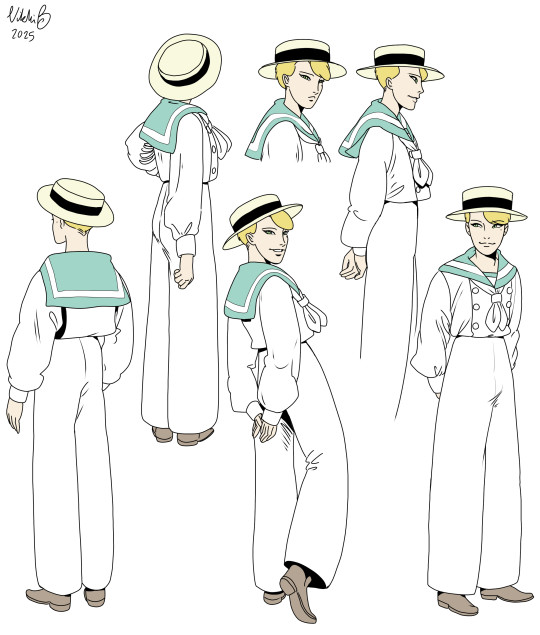

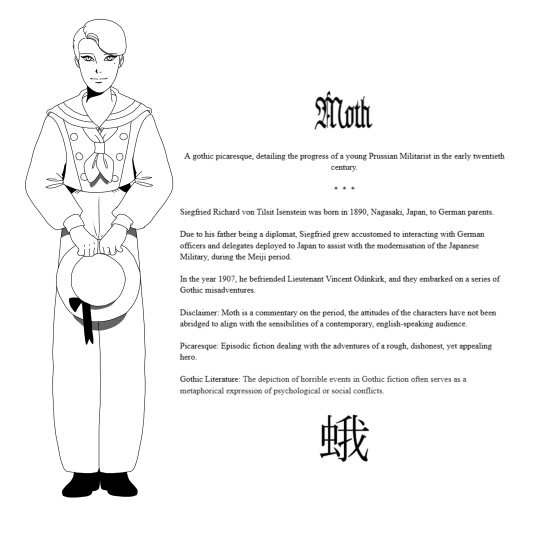
He's 17 in the first two volumes, and quiet sweet and innocent, some of his mannerisms are taken from Kiki (Kiki's Delivery Service); he hasn't truly come of age yet, in 1900's Germany you were considered a youth/child until you turned 21. Sigi had a fairly strict, isolated up-bringing, with most of his hours dedicated to study, since he becomes orphaned and has a large fortune, he is frivolous with money and unmotivated by the pursuit of wealth. He earnestly believes that he must be good and kind and is motivated to help others (Singing the final verses of Mozart's Abduction from the Seraglio which reflects the German Christian world view upheld in those days), for most people this outlook can cause a lot of anxiety, lucky for him he has a super-human level of inner peace; that aspect is inspired by Richard Wagner's Siegfried being unable to feel fear, but keep in mind that fear is usually in response to the unknown, something that Sigi has no patience for.
This part of the story is strongly inspired by the tale of Buddha leaving his palace and childhood home, seeing the suffering of the people and believing he must find a way to help them. People don't always want to be helped in the way Sigi would like to, and before he can really put his ideals into practice he looses his innocence and is overtaken by a curse of spite.
This younger version of Siegfried still has the mischievous smile that reads 'I know something that you don't' or 'That I should not'. He is highly perceptive and such an expression should make the receiver feel as if Sigi can read all their secrets on their face. This expression coupled with a witty come-back is just enough to keep him alive, because otherwise such a scrawny orphan would attract a wider range of predators.
#siegfried isenstein#moth#art#my art#character sheet#original character#wilhelmine#edwardian#sailor suit#historical fiction#meiji era#german culture
11 notes
·
View notes
Text
"startled and unnerved" - part 1 - 1781
part 2.1
---
Amid the heat of unrelenting summer, Vienna chanced upon its brightest star unborn.
Salieri, blissfully oblivious, has only heard fragments of idle talk passing through salons and dinner parties he never quite cared for. Some Prince-Archbishop of Salzburg, a man of increasingly unsavory reputation in certain circles; and a musician who wore his pride larger than the station of mere valet assigned to him.
Summer rolled on, the Archbishop Colloredo returned to his seat, but the musician remained, a blazing trail of noisy chatter following him wherever he went. Between outrageous tales of his humiliating dismissal, pithy scoffs about his uncouth, crass and sometimes childish manners, and growing testimonies of his unimaginable virtuosity— emerged a portrait of a brash, fearless youth, whose light only grew, and would seem to encroach all in its path.
Salieri hadn’t seen. He was busy then, his head was down and mired in his own heaping commitments. Seeing through the premiere of his (headache of a) German opera, and preparing another (thank God, in Italian, and with a worthy libretto) for the Munich carnivals the following year— on top of his duties at the Emperor’s court, and the extra students he was taking on while the Italian opera company remained closed. He didn’t have time for gossip, be they idolatry or libellous, or for sitting in Countess Thun’s salon to listen to passages of this Mozart’s opera. Rosenberg did, and buried in his jealous rant of a report there were yet decipherable notes of having been impressed, which, dear God, should have been a sign if he weren’t too blind to see.
He has never intentionally sought out Mozart’s music, only happened on one of the sonatas— for violin and piano— which he heard Mozart was publishing via subscription. It was a delightful duet, clever, bright, and arranged perfectly for the taste of the Viennese. Salieri remembered being impressed, but not astounded, and did not let it dissuade him from subsequently offering a few words of mild approval, when the Emperor sought someone new to compose for the Nationalsingspiel. In time, he put it out of mind. After all, many, many musicians with not inconsiderable talent came to Vienna, and it was he who was the best regarded, deemed the most worthy. Why should he care if some zany clavierist from an Austrian town has had a shot of fame?
Soon, it seemed, his indifference was to be punished by fate.
---
Mozart was summoned to Vienna by his then-employer, Prince-Archbishop Colloredo in March of 1781, after he premiered his opera Idomeneo in Munich. Mozart grew increasingly angry at Colloredo's demeaning treatment of him, until the violent rupture of their relationship & the end of Mozart's employment in June. Meanwhile, Salieri premiered his Der Rauchfangkehrer (The Chimney Sweep) in April. It's his only opera in German, commissioned from him by Emperor Joseph II, for his pet project, the Nationalsingspiel, to encourage works in the German language. It has a miserable libretto, which Mozart complained about in a letter to his father. (Coincidentally, Salieri's next opera, Semiramide, with text by Metastasio, was probably seen by Leopold Mozart while he was in Munich.) Countess Thun was one of Mozart's first patreons in Vienna, and he dined/performed frequently at her house. On one of these occassions, Count Rosini-Rosenberg was present & in fact impressed by pieces from Idomeneo, and later supported getting him a commission (for The Abduction from the Seraglio)— quite contrary to fictional portrayals of his character! Mozart's first publications in Vienna during this period were six sonatas, including K 376.
#antonio salieri#wolfgang amadeus mozart#mozart x salieri#mozart l'opera rock#mozart est la#rain's fics#fic: startled and unnerved#happy new year!#I have Tried if I'm inaccurate about anything do let me know#I am neither a history or a music student
6 notes
·
View notes
Text

Sunday, 11-24-24, 7pm Pacific
'Evenin' all, Mr. Baggins here with your Sunday Serenade, some music to soothe your achin' nerves and help ease us all into a good night, as we head into the new week. I thought we'd start this week's program off with Tchaikovsky's Serenade for Strings in C Major, Op. 48. Neville Marriner and The Academy do the honors.
youtube
Let's stay with Marriner and the ASMF, and hear their 1968 recording of Elgar's Serenade for Strings in E-minor, Op. 20.
youtube
Now let's travel back to 1953, for this historic first LP recording of Beethoven's Concerto No. 3 in C minor, by a young Rudolf Serkin with Eugene Ormandy and The Philadelphia,
youtube
Now let's hear Beethoven's Symphony No. 3, in E-flat, Op. 55, the "Eroica" or Heroic Symphony, with Lenny and The Vienna from his "Old Lion" years...even better than his earlier recording with the NYPO!
youtube
Now let's hear a little Bach, this time his Orchestral Suite No. 1, BWV 1066, played by Marriner and The Academy. Simply divine!
youtube
Now let's hear from Rudolf Serkin and Eugene Ormandy with The Philadelphia Orchestra again, this time with their sparkling performance of the Piano Concerto No. 2 in D-minor, Op. 40, of Felix Mendelssohn.
youtube
Here is another of Leopold Stokowski's transcriptions of famous pieces, this one his Tannhauser Overture and Venusberg Music, with massive orchestra and chorus, recorded for RCA Living Stereo in 1961. While I don't get into Wagner a great deal, this is the ultimate performance of this piece, and the ultimate recording, as well!
youtube
Now here is Elisabeth Schwarzkopf in a rare recording from 1946, of an absolutely gorgeous aria from Mozart's opera "Il Rey Pastore", K 208, "L'amero saro costante." Schwarzkopf's instrument was so young and fresh at this point, this recording as well as others made at the same time ("Martern aller arten", which I will post next) are amazing documents of her musicianship even in her early years.
youtube
And here from the same group of recordings, is "Martern Aller Arten" from Mozart's "The Abduction From The Seraglio". 1946.
youtube
And with that lovely and triumphant piece our Sunday Serenade draws to a close. I do hope you've enjoyed the selections for this evening, and maybe even heard something new to your ear. This is Mr. Baggins signing off for tonight. I'll return at 8am Pacific with Morning Coffee Music.
Until then, dream sweet dreams, babies, dream sweet dreams.
Baggins out.
youtube

4 notes
·
View notes
Text
I wish you all a very Good New Year.
Arthur Preuss & Elise Elizza - Libiamo ne' lieti calici
Arthur Preuss (1878-1944) was one of the finest character tenors of the early 20th century. Born the son of a merchant in Königsberg, Preuss wanted to be a singer from childhood. The boy’s father supported his son’s singing ambitions and sent him to Berlin to study at the tender age of fifteen. During this period of study, Preuss was heard by renowned composer and conductor Gustav Mahler, who was greatly impressed by the young tenor’s singing. Mahler secured an engagement for Preuss at the Vienna Hofoper, where the young tenor took on such buffo roles as David in Die Meistersinger, Monostatos in Die Zauberflöte, Pedrillo in Die Entführung aus dem Serail, Leopold in La Juive, Beppe in Pagliacci, the Marquis in Zar und Zimmerman, Baba Mustafa in Der Barbier von Bagdad and others. While working under Mahler at the Hofoper, Preuss was an invaluable member of the company, singing over 100 performances each season. The tenor participated in ten premieres, including first Vienna performances of Madama Butterfly (Goro) and Der Rosenkavalier (Valzacchi). Preuss left the Hofoper in February of 1915 following a personal clash with director Hans Gregor. He sang for a few years at the Vienna Volksoper and made a handful of guest appearances at the Staatsoper. By the mid-1920s, Preuss began participating in early radio broadcasts, including transmissions of complete operas. The tenor’s lyric tone had darkened somewhat, allowing him to essay such roles as Max in Der Freischütz and the title role in Fra Diavolo. Preuss was also intrigued by the advent of sound films, and lent his acting and singing talents to a few early German talkies. Following his retirement from active performing in 1930, Preuss opened a successful singing school in Vienna. The retired tenor continued working with young students throughout the 1930s and into the war years. Although he was largely neutral in his political leanings, Preuss’ son was active in the anti-Nazi resistance movement in Czechoslovakia. On August 20, 1944, the elder Preuss was arrested by the Gestapo and interrogated as to his son’s activities. Although he does not seem to have been physically abused by his captors, the emotional strain proved too much for the sixty-six-year-old tenor. In the midst of the lengthy interrogation, Preuss collapsed to the floor, dead from an apparent heart attack.
Arthur Preuss made a few discs for G&T and the Gramophone Company in the early years of the 20th century. These recordings reveal a voice that was well suited to both character parts and leading lyric tenor roles. Although Preuss easily transitioned from the comic roles of Pagliacci and Abduction From the Seraglio to the romantic leads of La Traviata and Merry Wives of Windsor, his was essentially a buffo tenor…albeit a very attractive and expressive buffo tenor. In this recording, Preuss joins soprano Elise Elizza (1870-1926) for a German language version of "Libiamo" from Act I of Verdi's La Traviata. This was recorded for G&T in 1904.
#classical music#opera#music history#bel canto#composer#classical composer#aria#classical studies#maestro#chest voice#Elise Elizza#soprano#Arthur Preuss#tenor#Libiamo ne' lieti calici#Giuseppe Verdi#La Traviata#classical history#classical musician#classical musicians#history of music#historian of music#musician#musicians#diva#prima donna
3 notes
·
View notes
Text
🌙✨Uranus in Gemini; The Revolution of Minds, Machines and Messages✨🌙
Uranus in Gemini: The Revolution of Minds, Machines, and Messages ⚡📡
When Uranus enters Gemini, the world doesn’t just change—it accelerates. Uranus is the planet of shocks, innovation, and rebellion, and Gemini rules communication, travel, trade, and technology. Put them together, and you get eras of radical invention, war strategies that change the battlefield forever, and major shifts in how people think, move, and connect.
This happens every 84 years, staying in Gemini for about 7 years each time. The next round? July 7, 2025 – May 22, 2033. Buckle up.
Last Time Uranus Was in Gemini (1941–1949): World War, Air Power, and the Digital Age Begins
This was one of the most explosive and game-changing transits in modern history. The world was already at war, but once Uranus hit Gemini, everything sped up.
🔥 1941 – The U.S. enters WWII after the attack on Pearl Harbor. Before this, America had been on the sidelines—once Uranus entered Gemini, it was all in.
✈️ 1941 – Air combat takes over: The Battle of Britain (1940–1941) had already proven that air power was the future of war. Fighter planes, bombers, and aircraft carriers became the most strategic weapons.
💥 1945 – Atomic bombs dropped on Hiroshima & Nagasaki: The biggest Uranus-in-Gemini moment—nuclear warfare changed global power forever.
📡 1945 – First computer (ENIAC) developed: The digital revolution was born. Before this, computers were a fantasy—now, they were real.
🔗 1945 – The United Nations founded: After the devastation of war, world leaders tried to build a new way of global communication and diplomacy.
🚀 1947 – The Roswell UFO Incident: The modern era of UFOs, conspiracy theories, and the space race kicked off right when Uranus was electrifying Gemini.
🌎 1949 – NATO founded: A new global military alliance formed, shifting power structures for decades.
1858–1865: Railways, the Telegraph, and the American Civil War
This era was all about revolutionary transport, communication, and warfare.
🚂 1859 – Railways explode worldwide: Railroads connected cities and continents, shrinking travel time from weeks to days.
📞 1861 – The first transcontinental telegraph line completed: Before this, news took weeks to travel. Now? Instant messaging changed everything.
⚔️ 1861–1865 – The American Civil War: The war itself wasn’t surprising, but the technology was—trains, telegraphs, and rifles made this the first truly modern war.
🔥 1863 – The Emancipation Proclamation: A major ideological shift—slavery was abolished in the rebellious Confederate states, setting the stage for global human rights movements.
🔬 1865 – Pasteur develops Germ Theory: Before this, people didn’t even know germs caused disease. Medical science would never be the same.
1774–1782: Revolutions and Radical New Ideas
This was a time of rebellions, inventions, and shocking political shifts.
🇺🇸 1775–1783 – The American Revolution begins: Colonists decided they’d had enough of British rule. The war was a classic Uranus-in-Gemini story—fought with new ideas, secret communications, and guerrilla tactics.
📖 1776 – The Declaration of Independence: The birth of modern democracy—freedom, rights, and rebellion against monarchy.
📡 1776 – Adam Smith publishes The Wealth of Nations: The book that shaped modern capitalism, arguing for free markets and trade.
⚡ 1781 – Uranus itself is discovered! Yep, Uranus was first spotted while it was in Gemini—if that’s not a sign of its chaotic energy, I don’t know what is.
🎭 1782 – Mozart writes The Abduction from the Seraglio: A major shift in music—opera became fun, fast, and rebellious, just like Uranus in Gemini.
1680–1687: Science, Seafaring, and a Revolution in Knowledge
🧠 1687 – Isaac Newton publishes Principia Mathematica: One of the most important books in history—Newton’s laws of motion and gravity laid the foundation for modern physics.
🛳️ 1680s – The Age of Piracy Begins: Pirates ruled the seas—smuggling, raiding, and rewriting the rules of maritime warfare.
🎭 The First Modern Newspapers Appear: Before this, news was slow and controlled by the elite—now, the public could get information quickly and independently.
What to Expect in 2025–2033: The New Uranus in Gemini Era
⚠️ History tells us that when Uranus enters Gemini, the world speeds up. Expect revolutions in technology, warfare, communication, and transportation—some of it thrilling, some of it terrifying.
🚀 Space Travel & AI Breakthroughs: Just as past transits brought planes and computers, this one could bring space colonization, quantum computing, or brain-machine interfaces.
💣 New Kinds of War: Drones, cyber warfare, and AI-driven battles could replace traditional ground wars.
📡 A Communication Revolution: Expect the internet to evolve massively, with new platforms, holographic communication, or AI news anchors.
🛸 UFO Disclosure?: Last time, we got Roswell—this time? Full government disclosure?
🚄 New Transport Tech: Hypersonic travel, flying cars, teleportation tech? Gemini loves movement, and Uranus brings the future.
💭 Mass Ideological Shifts: Just as 1776, 1863, and 1945 changed how people saw the world, we could see new political movements, digital democracies, or even AI-driven governance.
The Bottom Line 🚀⚡
When Uranus enters Gemini, the old ways shatter. We get new machines, new ideas, and a new way of life. Looking at history, one thing’s certain:
🔥 The next 7 years will be fast, chaotic, and unforgettable.
Follow The Lantern’s
Glow

#uranus in gemini#2025#witchcraft#paganism#astrology#folklore#magic#revolution#aries#taurus moon#gemini horoscope#oil on canvas#cancer horoscope#leo astrology#virgo#libra#scorpio#sagittarius#capricorn things#aquarius#pisces#revolución#game changer#followthelanternsglow
6 notes
·
View notes
Text
A Sword & a Caress. Few rate the Callas voice as opera's sweetest or most beautiful. It has its ravishing moments. In quiet passages, it warms and caresses the air. In ensembles, it cuts through the other voices like a Damascus blade, clean and strong. But after the first hour of a performance, it tends to become strident, and late in a hard evening, begins to take on a reverberating quality, as if her mouth were full of saliva. But the special quality of the Callas voice is not tone. It is the extraordinary ability to carry, as can no other, the inflections and nuances of emotion, from mordant intensity to hushed delicacy. Callas' singing always seems to have a surprise in reserve. With the apparently infinite variety of her vocal inflections, she can keep the listener's ear constantly on edge for a twist of an emotional phrase, constantly delighted by a new and unexpected flick of vocal excitement. Quite apart from the quality of her voice, her technique is phenomenal. The product of the relentless discipline that characterizes everything she does, it enables her to ignore the conventional boundaries of soprano, mezzo-soprano and contralto as if they had never been created. She can negotiate the trills and arabesques of coloraturas as easily as she trumpets out a stinging dramatic climax. Like her operatic sisters of a century ago, La Callas can sing anything written for the female voice. Because of her, La Scala has revived some operas (Mozart's Abduction from the Seraglio, Verdi's Sicilian Vespers, Cherubini's Medea) that it had not staged for years because no modern diva could carry them off. Blood & Tears. As actress. Callas is more exciting than any singer has a right to be. Her acting takes the form of a flashing eye that petrifies an emotion, a sudden rigidity that shouts of a breaking heart, a homicidal wish or a smoldering passion ("It takes nerve to stand still"). Callas' style of movement on stage strangely resembles the striding and lurching of the hamhearted operatic actress, but she moves so gracefully, so alluringly, with such authority, that even opera's baroque gestures take on breathtaking conviction. In her first Aida at La Scala in 1950, she startled the crowd by stalking about like a hungry leopard instead of taking the usual stately stance for her Act III duet. In the death scene of Fedora, in which sopranos tend to expire stiffly on a divan, Callas staggers from it, sags to her knees, drags herself up, crawls towards her lover's room, collapses again before she finally rolls down and dies. In Norma she has cried real tears. Operagoers, long reconciled to the classic, three-gesture range of other prima donnas, are astounded and delighted.
Music: The Prima Donna, Monday, Oct. 29, 1956 issue of Time Magazine
21 notes
·
View notes
Text
Opera on YouTube 6
Pagliacci
Franco Enriques studio film, 1954 (Franco Corelli, Mafalda Micheluzzi, Tito Gobbi; conducted by Alfredo Simonetto; no subtitles)
Tokyo Bunka Kaikan, 1961 (Mario del Monaco, Gabriella Tucci, Aldo Protti; conducted by Giuseppe Morelli; Japanese subtitles)
Herbert von Karajan studio film, 1968 (Jon Vickers, Raina Kabaivanska, Peter Glossop; conducted by Herbert von Karajan; no subtitles)
Franco Zeffirelli film, 1983 (Plácido Domingo, Teresa Stratas, Juan Pons; conducted by Georges Prêtre; English subtitles) – Part I, Part II, Part III, Part IV, Part V, Part VI
Metropolitan Opera, 1994 (Luciano Pavarotti, Teresa Stratas, Juan Pons; conducted by James Levine; Spanish subtitles)
Ravena Festival, 1998 (Plácido Domingo, Svetla Vassileva, Juan Pons; conducted by Riccardo Muti; Italian subtitles)
Zürich Opera House, 2009 (José Cura, Fiorenza Cedolins, Carlo Guelfi; conducted by Stefano Ranzani; no subtitles)
Chorégies d'Orange, 2009 (Roberto Alagna, Inva Mula, Seng-Hyoun Ko; conducted by Georges Prêtre; French subtitles)
Gran Teatre del Liceu, 2011 (Marcello Giordani, Angeles Blancas, Vittorio Vitelli; conducted by Daniele Callegari; English subtitles – ignore the silly references to Norse mythology and aliens that the translator threw in, they're not in the actual libretto)
Latvian National Opera, 2019 (Sergei Polyakov, Tatiana Trenogina, Vladislav Sulimsky; conducted by Jānis Liepiņš; no subtitles)
Die Entführung aus dem Serail
Dresden State Opera, 1977 (Armin Ude, Carolyn Smith-Meyer, Barbara Sternberer, Rolf Tomaszewski; conducted by Peter Gülke; no subtitles)
Bavarian State Opera, 1980 (Francisco Araiza, Edita Gruberova, Reri Grist, Martti Talvela; conducted by Karl Böhm; English subtitles)
Royal Opera House, Covent Garden, 1988 (Deon van der Walt, Inga Nielson, Lillian Watson, Kurt Moll; conducted by Georg Solti; English subtitles)
Salzburg Festival, 1989 (Deon van der Walt, Inga Nielson, Lillian Watson, Kurt Rydl; conducted by Horst Stein; no subtitles)
Théâtre du Châtelet, 1991 (Stanford Olsen, Luba Orgonasova, Cyndia Sieden, Cornelius Hauptmann; conducted by John Eliot Gardiner; French subtitles)
Vienna State Opera, 1989 (Kurt Streit, Aga Winska, Elzbieta Szmytka, Artur Korn; conducted by Nicolaus Harnoncourt; Hungarian subtitles) – Act I, Act II
Teatro della Pergola, 2002 (Rainer Trost, Eva Mei, Patrizia Ciofi, Kurt Rydl; conducted by Zubin Mehta; Spanish subtitles)
Gran Teatre del Liceu, 2012 (Christoph Strehl, Diana Damrau, Olga Peretyatko, Franz-Josef Selig; conducted by Ivor Bolton; Catalan subtitles)
Bankhead Theatre, 2018 (David Walton, Alexandra Batsios, Elena Galvan, Kevin Langan; conducted by Alex Katsman; English subtitles)
Theatro São Pedro, 2023 (Daniel Umbelino, Ludmilla Bauerfeldt, Ana Carolina Coutinho, Luiz-Ottavio Faria; conducted by Cláudio Cruz; Brazilian Portuguese subtitles)
Un Ballo in Maschera
Tokyo Bunka Kaikan, 1967 (Carlo Bergonzi, Antonietta Stella, Mario Zanassi; conducted by Oliviero di Fabritiis; Spanish subtitles)
Royal Opera House, Covent Garden, 1975 (Plácido Domingo, Katia Ricciarelli, Piero Cappuccilli; conducted by Claudio Abbado, English subtitles)
Teatro alla Scala, 1978 (Luciano Pavarotti, Mara Zampieri, Piero Cappuccilli; conducted by Claudio Abbado; Italian subtitles)
Metropolitan Opera, 1980 (Luciano Pavarotti, Katia Ricciarelli, Louis Quilico; conducted by Giuseppe Patané; no subtitles)
Royal Swedish Opera, 1986 (Nicolai Gedda, Siv Wennberg, Carl Johan Falkman; conducted by Eri Klas; sung in Swedish; Swedish subtitles)
Salzburg Festival, 1990 (Plácido Domingo, Josephine Barstow, Leo Nucci; conducted by Georg Solti; Spanish subtitles)
Leipzig Opera House, 2006 (Massimiliano Pisapia, Chiara Taigi, Franco Vassallo; conducted by Riccardo Chailly; English subtitles) – Part I, Part II
Teatro Regio di Torino, 2012 (Gregory Kunde, Oksana Dyka, Gabriele Viviani; conducted by Renato Palumbo; no subtitles) – Part I, Part II
Chorégies d'Orange, 2013 (Ramón Vargas, Kristin Lewis, Lucio Gallo; conducted by Alain Altinoglu; French subtitles)
Arena di Verona, 2014 (Francesco Meli, Hui He, Luca Salsi; conducted by Andrea Battistoni; no subtitles)
Cavalleria Rusticana
Giorgio Strehler studio film, 1968 (Gianfranco Cecchele, Fiorenza Cossotto; conducted by Herbert von Karajan; no subtitles)
Metropolitan Opera, 1974 (Franco Tagliavini, Grace Bumbry; conducted by John Nelson; no subtitles)
Franco Zeffirelli film, 1983 (Plácido Domingo, Elena Obraztsova; conducted by Georges Prêtre; no subtitles)
Ravenna Festival, 1996 (José Cura, Waltraud Meier; conducted by Riccardo Muti; Italian subtitles)
Ópera de Bellas Artes, 2008 (Alfredo Portilla, Violeta Dávalos; conducted by Marco Zambelli; Spanish subtitles)
Zürich Opera, 2009 (José Cura, Paoletta Marrocu; conducted by Stefano Ranzani; no subtitles)
Chorégies d'Orange, 2009 (Roberto Alagna, Beatrice Uria-Monzon; conducted by Georges Prêtre; French subtitles)
Gran Teatre del Liceu, 2011 (Marcello Giordani, Ildiko Komlosi; conducted by Daniele Gallegari; Spanish subtitles)
Mikhailovsky Theatre, St. Petersburg, 2012 (Fyodor Ataskevich, Iréne Theorin; conducted by Daniele Rustioni; English subtitles)
Vienna State Opera, 2019 (Younghoon Lee, Elina Garanča; conducted by Graeme Jenkins; English subtitles)
#opera#youtube#complete performances#pagliacci#die entführung aus dem serail#the abduction from the seraglio#un ballo in maschera#cavalleria rusticana#ruggero leoncavallo#wolfgang amadeus mozart#giuseppe verdi#pietro mascagni
9 notes
·
View notes
Text
peeked at the recorded lecture for next week's class. looks like we're watching and discussing part of abduction from the seraglio. let's go mozart gang
4 notes
·
View notes
Text
that moment when the abduction from the seraglio gives you a boner
14 notes
·
View notes
Text
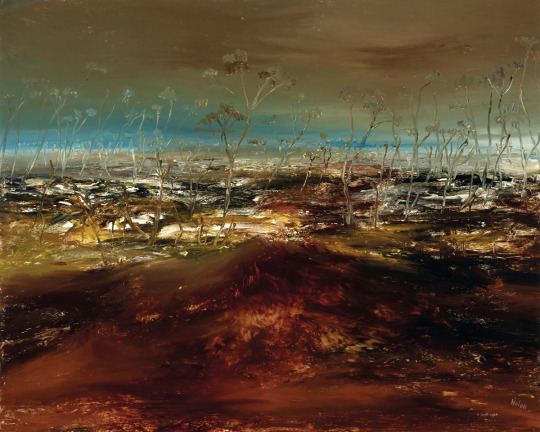
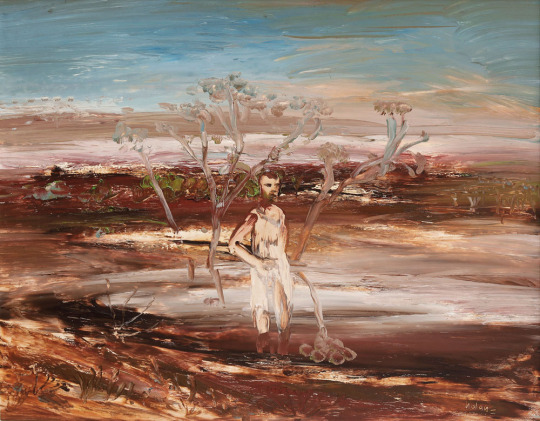
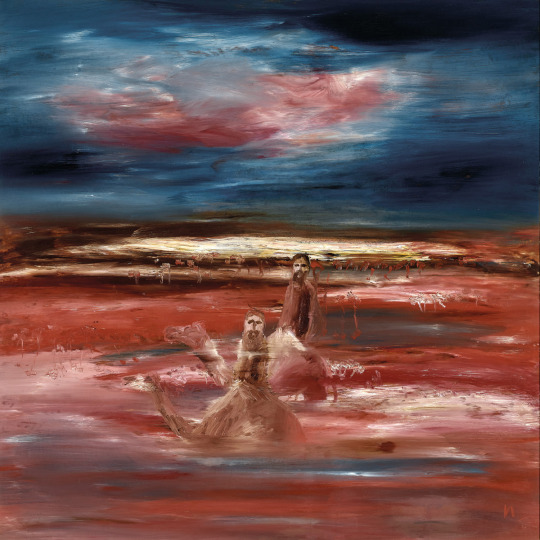
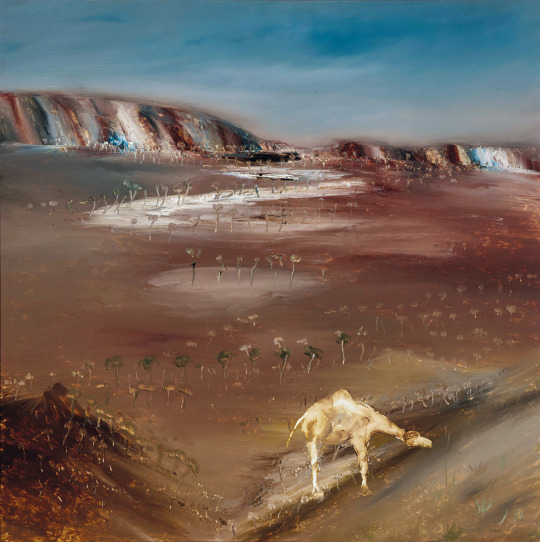
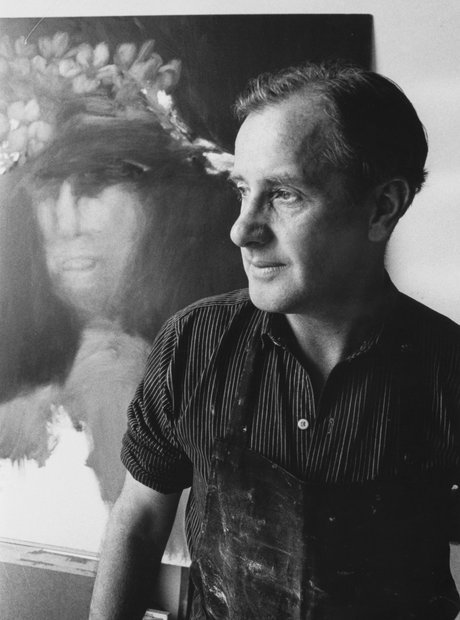
Sidney Nolan (1917 - 1992) was one of Australia’s most significant modernist artists, best known for his depictions of the history and mythology of bush life in Australia. His paintings, often rich in colour, striking in composition and deliberately awkward in technique, represent Australian stories of loss, failure and capture, featuring figures such as the bushranging Kelly Gang, shipwreck victim Eliza Fraser and the explorers Burke and Wills. Nolan’s iconic paintings of the Kelly Gang contributed to the development of the image of Ned Kelly as a symbol for Australian history and identity.
In 1948, Kenneth Clark, Slade Professor at Oxford, was visiting Australia and urged Nolan to travel in Europe. Nolan left for London in 1951 and spent extended periods in Greece and the USA. He continued to work on his early subject matter throughout his career, returning almost obsessively to the Kelly Gang, Eliza Fraser and Burke and Wills, for example in Burke 1962. He also worked often as a designer for theatre and opera productions, including Samon et Dalila and The abduction from the Seraglio in 1987 at Covent Garden, London and Il trovatore for the Australian Opera in 1983. Nolan was knighted in 1981 and made an associate member of the Royal Academy of Arts (UK) in 1987 and a companion of the Order of Australia in 1988.
https://www.artgallery.nsw.gov.au/.../artists/nolan-sidney/
12 notes
·
View notes
Text
Does anyone know what the music playing during the escape in 2x03 was? For some reason my brain started telling me it was the slow/quiet bit from the overture from Abduction from the Seraglio, but then I went and checked and uh pretty sure not. (It would have been funny, though.)
4 notes
·
View notes
Text

Letter from Mozart to his father, Leopold, from Vienna, dated July 27, 1782*
"Dearest and best of all fathers!— I must implore you, implore you for all you hold dear in the world: please give me your consent so that I can marry my dear Konstanze**.—Don't think it is only for the sake of getting married—if it were for that reason alone, I'd be glad to wait a little longer.—However, I feel that it is absolutely necessary on account of my honor as well as that of my girl, but also on account of my health and peace of mind.—My heart is in turmoil, my head confused—how can one think and work intelligently under such circumstance?"
*exerpt from Mozart’s Letters, Mozart’s Life. Spaethling (ed.) 2005
**his lover's (and soon to be wife) name is spelt Constanze, but Mozart frequently confuses it with Konstanze, the female lead character of his opera the Abduction from the Seraglio
3 notes
·
View notes
Text
The German word for degenerate (adj.) is entartet. Art has a constellation of meanings around a category of thing or a manner of doing something. It is used for things like style or type (nach hausgemachter Art, homemade-style), but it also refers to a species (artengerechte Haltung, being held (in captivity) in a manner befitting the species).
The prefix ent- has a connotation of taking something away (Die Entführung aus dem Serail, The Abduction from the Seraglio; ent + führen, to take away) or of something falling away (Der Zug S85 um 10:12 wird heute leider entfallen, The S85 at 10:12 is unfortunately cancelled today; ent + fallen, to fall away (look, literal 1-for-1 is hard)).
So when you put ent and Art together to make entartet, you have a word that translates to degenerate, yes, but it implies taking away the nature of one's being as part of a species. The DWDS gives seine Art, Beschaffenheit verlieren as the gloss: "to lose one's species/type/manner/nature, properties."
Which isn't quite as on-the-surface in English (because we also use degenerate (verb) for things like the cartilage in knee joints degrading over time (degenerative joint disease), and the connection with "genes" isn't as visible. (I usually make the connection in English with "degrading" and not genes. But my degree is in German, not English, so that's my excuse.)

DNI lists on this website are fucking insane
67K notes
·
View notes